Decorative paint for walls: types and most common techniques
The concept we have around what decorative painting is dates back to the Renaissance era. A current and cultural movement that emerged in Western Europe during the 15th and 16th centuries, thus marking the beginning of the Modern Age.
However, the true origin of decorative wall painting comes from a long, long time ago. When the first civilizations as a way of communicating and/or recording an event, made different marks and drawings in the caves they inhabited.
A decorating method that has evolved alongside human beings, being polished and perfected to what it is today. In this article, we are going to address the most known types and techniques of a paint that has as many styles as there are cultures in the world.
¿Qué es la pintura decorativa?
Decorative painting is a type of painting used to transform the appearance of a surface, regardless of its size, or object. The purpose is none other than to beautify the appearance of the existing support and, also in some cases, to reinforce the resistance and durability of the coating on which it is applied.
Un material que puede usarse en superficies expuestas a impactos, como por ejemplo muebles, mesas, sillas, pisos, etc, pero también en las superficies no transitables. En este sentido, las paredes son sin duda una de las superficies donde más se utiliza la pintura decorativa como recubrimiento. Tanto en espacios interiores de casas y negocios como, por qué no, en exteriores. Cabe decir que este último ámbito de aplicación es menor, ya que no todas las pinturas son aptas para aplicaciones al aire libre por no ser resistentes a los rayos del sol, al agua y otras condiciones climatológicas.
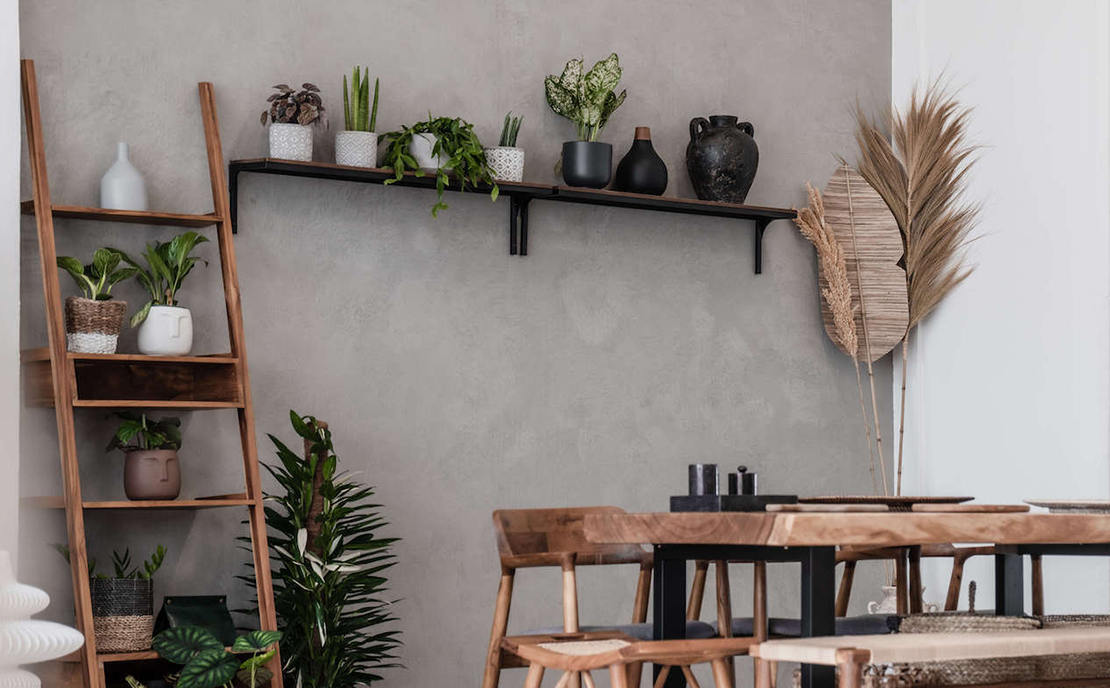
¿Dónde aplicar la pintura decorativa?
Decorative painting allows for a wide range of styles, designs, and textures. Therefore, it is unlikely to repeat the same finishes, as there will always be a nuance that will make the difference between one surface and another. The chosen technique, the color of the paint, and the way the product is applied, each has its own particular procedure, are factors that will distinguish the final finishes.
Although the walls are usually the favorites to use this technique, the benefits of using this paint extend to ceilings, floors, and furniture. In all of them, the use of this product is not limited to giving color to the surface, but it gives it personality and style through the created texture.
A decoration technique, with special incidence in interiors, that has become a protagonist in the renovation of rooms, living rooms, kitchens, bathrooms, and large commercial premises. Going from being a paint for merely professional use to gaining popularity among individuals who want to give their homes a second life.
Benefits of decorative wall paint
Cada pintura decorativa tiene beneficios específicos. Algunas pueden usarse en exteriores además de interiores, otras pueden crear acabados metálicos u oxidados, también las hay con propiedades impermeables, etc. Por eso, es necesario evaluar previamente las necesidades de cada revestimiento. Claramente no es lo mismo una pared de un baño, expuesta día tras día a la humedad, que una pared de una habitación. Factores que desarrollaremos más adelante.
Por ahora, y de modo genérico, vamos a detallar las principales ventajas que comparten estos tipos de pintura.
Amplia variedad de efectos y colores
La pintura permite crear multitud de combinaciones al poder jugar con los colores, los efectos y texturas. Desde propuestas más convencionales a propuestas más arriesgadas para destacar un elemento concreto de la estancia y que la atención se pose sobre él. Contrastes que cada vez están más de moda.
Versatility of application
Just as creations are virtually infinite, it can be applied on numerous surfaces and rooms. Walls, floors, ceilings, furniture, etc. Indoors and outdoors.
Rápidas y fáciles de aplicar
Unlike other coatings that require removing the existing ones, decorative paint is placed on top completely hiding what is underneath. There are no works, nor debris. A speed to highlight as well as the ease of application. Why complicate when everything is advantages?
Protegen el nuevo revestimiento
Muchas pinturas no solo tienen una función puramente decorativa, sino que también ayudan a reforzar la pared o el piso. Protegen al nuevo revestimiento del desgaste, roces, impactos, etc.
Possibility of waterproof and non-slip finishes
As if the advantages seen so far were not enough, it is necessary to underline the waterproof and non-slip finishes that some paints offer. Two increasingly determining factors to bet on this technique.
Son muy duraderas
Si se aplican correctamente y el uso que se les da es el adecuado, pueden ser muy duraderas y no necesitar que la superficie sea repasada con otra capa de pintura en poco tiempo.
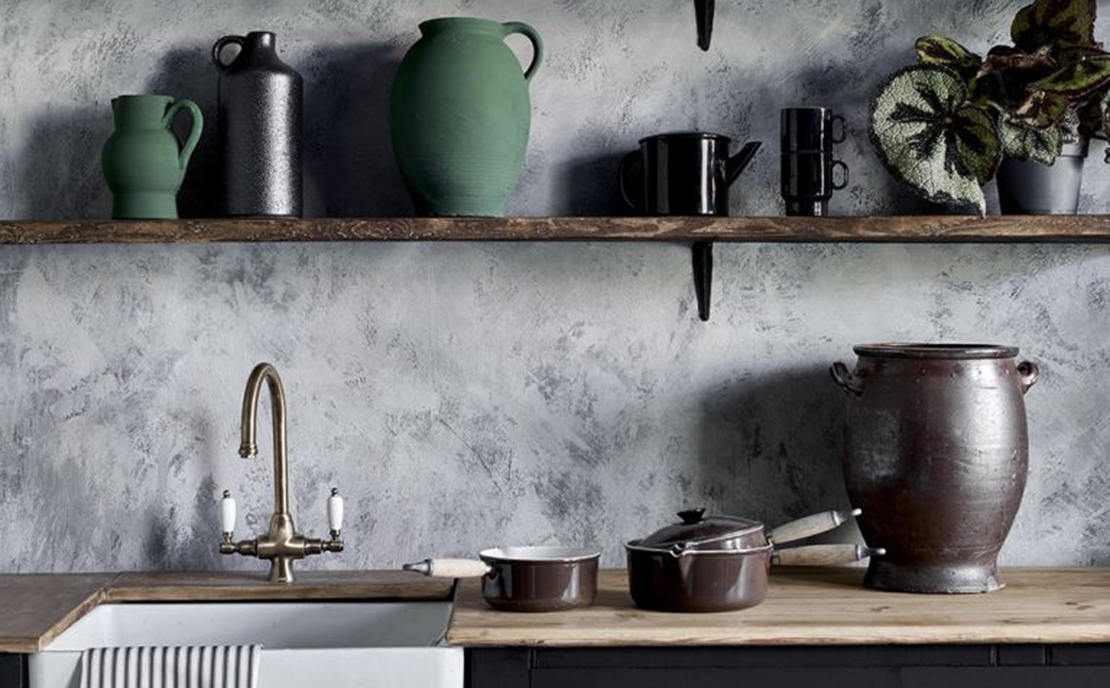
Factores para elegir una pintura decorativa
¿Qué pintura decorativa elegir? La respuesta es muy sencilla. La más adecuada para la superficie donde vaya a ser aplicada. Ese es el consejo más valioso. Centrarse únicamente en el acabado o el color es un error, porque cada soporte necesita unas propiedades particulares.
Vamos a ver los factores más importantes que hay que considerar para elegir una pintura u otra son los siguientes:
1. Material a cubrir con la pintura decorativa
We just said it. Not all paints fit for the same supports. Because it simply is not the same to coat wood as a plasterboard wall, for example. So you have to be well informed before buying one or the other.
2. Diferenciar superficies transitables de las no transitables
Coating the floors entails more complexity in the long term than the walls, since the former need a paint that is much more resistant to wear by abrasion, impacts, etc. As also happens with furniture.
Igualmente, también hay que valorar la estancia que va a ser pintada. Los baños y cocinas necesitan unas pinturas con propiedades impermeables, por ejemplo. Productos lavables, anti-humedad, etc.
3. La resistencia en exteriores
Just as the material and surface model are substantial factors, resistance in outdoor spaces is also. There are decorative paints that are unalterable to sunlight, rain, and wind. But not all.
4. Calidad de la pintura decorativa
Parece una obviedad, y lo es. Pero muchas veces por intentar ahorrar, el resultado final acabará siendo más caro de lo que pensábamos. La calidad no es un factor que tomarse a la ligera.
5. Acabado decorativo
¿Qué es lo que estás buscando exactamente? ¿Una pintura decorativa con acabado brillante? ¿Más satinado? ¿O efectos metálicos y oxidados tal vez? Cada pintura tiene la capacidad de garantizar un acabado decorativo u otro.
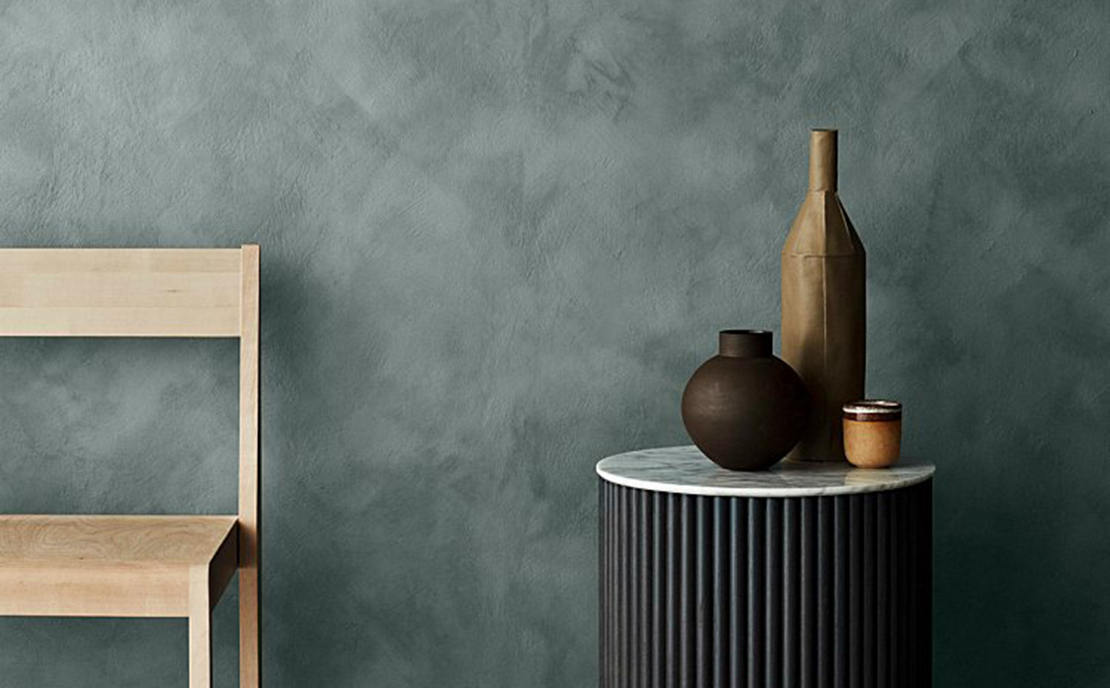
Types of decorative paints for walls
There is a wide range of paints for decorating walls depending on the use and features you are looking for. In the list we have made, we have taken into account the most frequent ones to renovate the rooms of the home.
1. Pintura de látex o plástica
La pintura de látex o plástica es la más común para las paredes interiores. Aunque es cierto que dependiendo de su composición, a veces también se puede usar en exteriores.
Se caracteriza por ser una pintura a base de agua, lo que evita los olores a menudo desagradables de las que son a base de solvente. En este sentido, garantiza resistencia al agua. Además es muy fácil de aplicar, se puede lavar y se seca muy rápido. Sin embargo, no es recomendable en superficies de madera que no estén tratadas.
Una pintura de látex o plástica que a su vez se divide en acrílica y vinílica y ofrece tres tipos de acabados: mate, satinado y brillante.
Matte plastic paint: more opaque finish and without shine. It's a bit harder to wash but it's perfect for walls with very noticeable defects or that are very old.
Pintura plástica satinada: a medio camino entre el acabado mate y el acabado brillante. Muy recomendable para pintar paredes lisas o con colores intensos, ya que realza la tonalidad de las mismas.
Pintura plástica con brillo: acabado más reflectante. Se limpia muy fácil con agua, por lo que es una pintura decorativa ideal para habitaciones como baños y cocinas. Será necesario, eso sí, lijar la pared de manera previa.
1.1 Pintura acrílica
Paint with superior resistances, both indoors and outdoors. It ensures greater waterproofing power on walls and, in addition, perfectly withstands mold and sunlight. It has excellent adhesion on many materials, except for untreated wood surfaces.
1.2 Pintura vinílica
The versatility of vinyl plastic paint is greater, as well as its flexibility. Likewise, its smell is practically imperceptible and its application is simple.
2. Pintura esmalte sintético
Paint made up of synthetic resins to the solvent. Therefore, unlike plastic paint, it is much more durable and resistant. It also preserves the shine of the surface very well, even in outdoor spaces because it resists water and humidity better. The finishes it offers are smoother. It is used mainly on wooden or metal walls, although its field of application is much broader.
However, it requires a longer drying period and special care must be taken with the intrinsic gases of this decorative paint for walls. Gases that can be harmful and even cause dizziness if the space is not properly ventilated.
3. Pintura esmalte acrílico
Its name leaves no room for mystery. Paint formulated with acrylic resins, catalysts, and pigments. Completely soluble in water and odorless, so it is not necessary to be as rigorous with the ventilation of the room as with synthetic enamel paints. They are frequently used in artistic decoration.
4. Pinturas de primera mano
Pre-coating that serves as a base for decorative paint. The purpose of the primer is to consolidate the support and facilitate the subsequent absorption of the paint used to decorate and finish the wall. Adhesion improves exponentially, minimizes imperfections and at the same time reduces the cost of finish paint.
5. Barnices
Los barnices se usan para proteger cualquier tipo de pintura además de darles brillo o color. Normalmente, se hacen a base de poliuretano. Sobresalen por sus propiedades impermeables, su durabilidad y resistencia frente a la abrasión.
5. Pintura mineral o al silicato
Gracias a su alto poder de cobertura y su permeabilidad al vapor de agua, la pintura mineral o al silicato está indicada principalmente para las paredes que presentan problemas de humedad.
Decorative paint based on inorganic mineral pigments and insoluble silicates. In appearance, they resemble lime paint but are of higher quality and more resistant. As they are made with renewable raw materials, they can be classified as ecological paints.
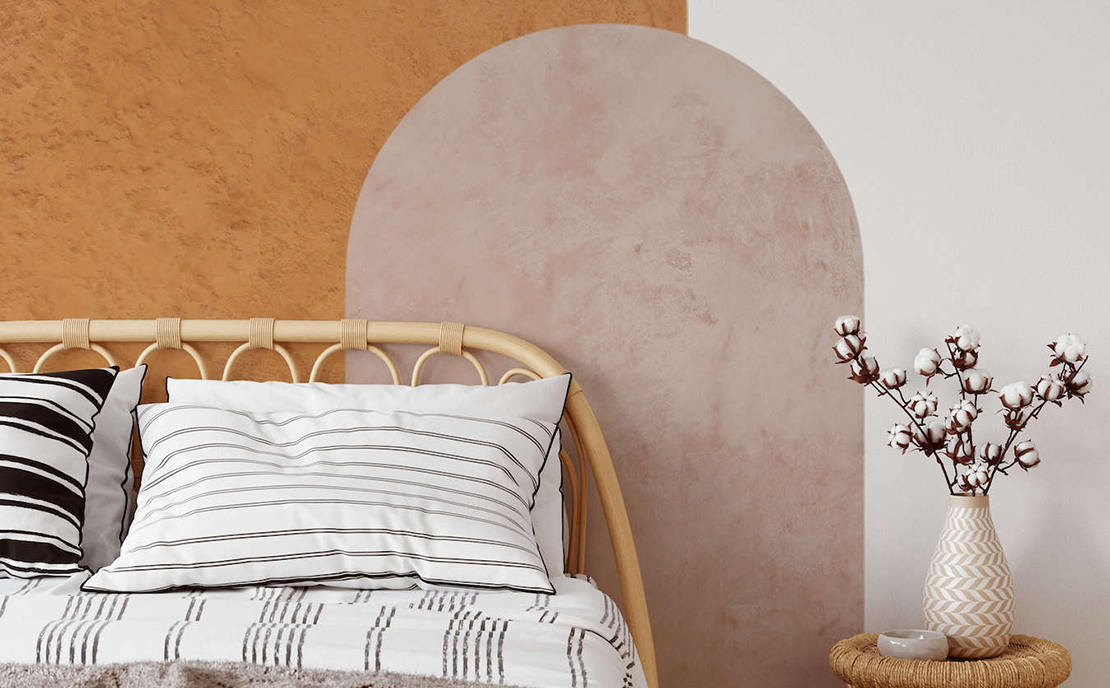
Técnicas de pintura decorativa para paredes
Paints are one of the most used resources to decorate walls, thanks to the plurality of effects that can be achieved. There are numerous decorative painting techniques for walls to choose from that best suit demands and needs. Next, we are going to expose the main ones.
Tierras florentinas
La particularidad de la técnica decorativa de las tierras florentinas está en las resinas especiales de su composición. Unas resinas en varios colores que son las causantes de ese acabado tan característico cuando se expanden por las paredes. Más allá de que existe una amplia gama de colores, las tierras florentinas destacan por su buena dureza y resistencia, además de ser lavables con facilidad.
The Florentine lands are, in the end, a stucco with shaded and aged effects that imitates Renaissance-style walls. A very specialized decorative painting technique for walls, with soft textures and small reliefs. Although its application is diverse, white is generally used on colored backgrounds or previously mixed natural dyes.
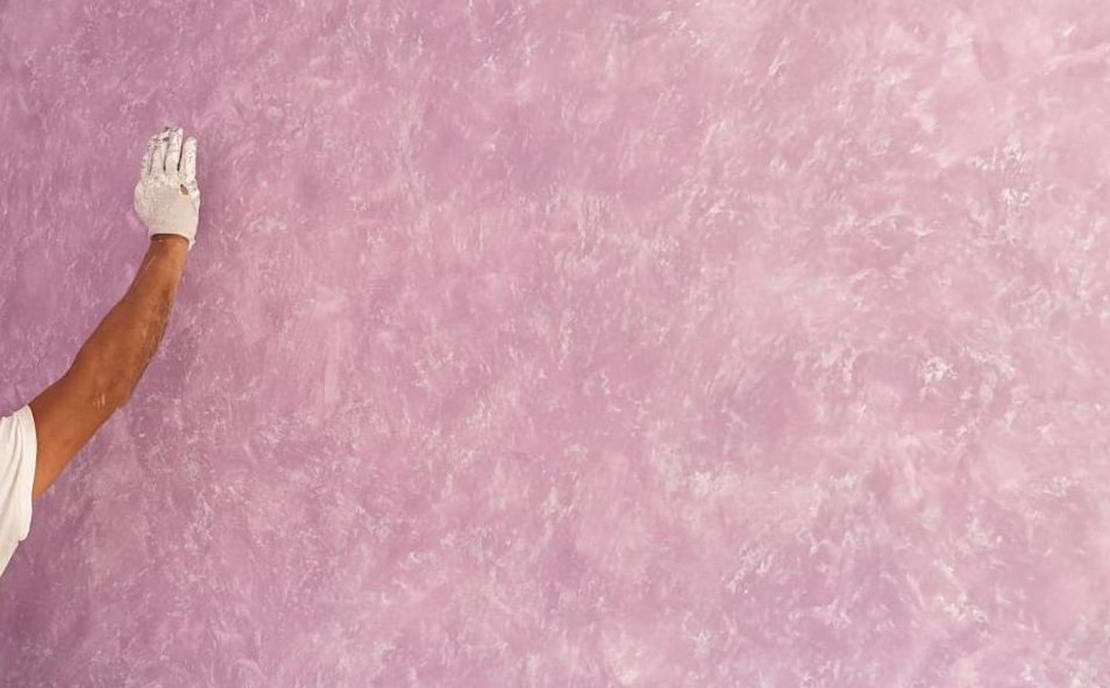
Estuco veneciano
El estuco venecianoes otra de las técnicas de pintura decorativa para paredes más primarias e importantes. Originaria de Venecia, es un efecto estético resultante de utilizar una pasta hecha con polvo de mármol, cal, pigmentos y yeso cuyo acabado se asemeja mucho al mármol por ese brillo tan singular.
Among its most interesting benefits, is its resistance to humidity and its breathability. A paint of great durability that revalues the space and that, also, has the added value of being composed of natural elements.
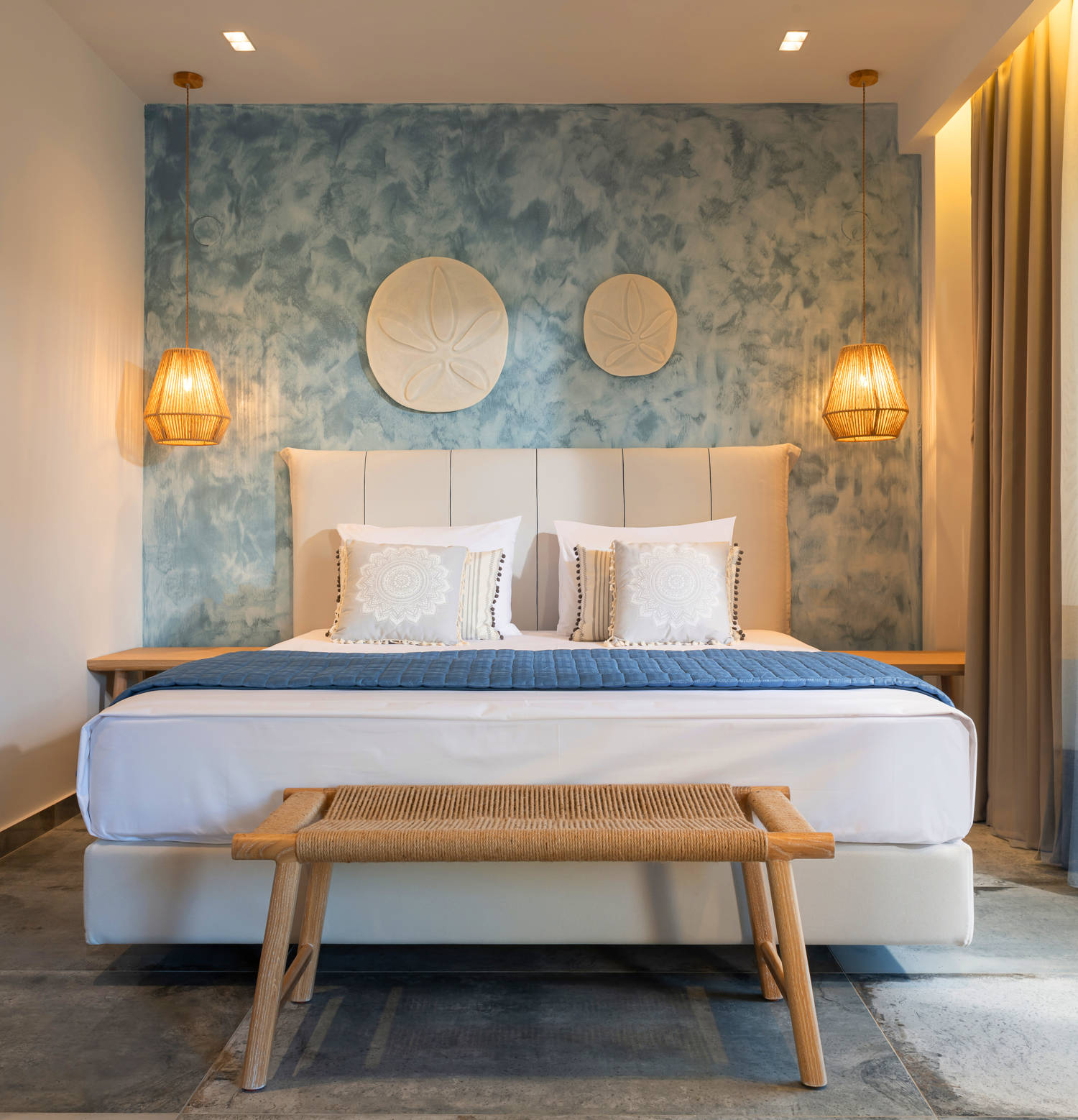
Técnica del esponjado
Another of the most used decorative painting techniques for walls is sponging. It consists of gently and repeatedly dabbing with a sponge on the surface until the desired finish is achieved. The effect will be better the wider the pore is.
A finish that adds depth and volume to the room and is very easy and economical. Ideal for large surfaces where the contrast is more striking. We recommend using a natural sponge for a more elaborate effect.
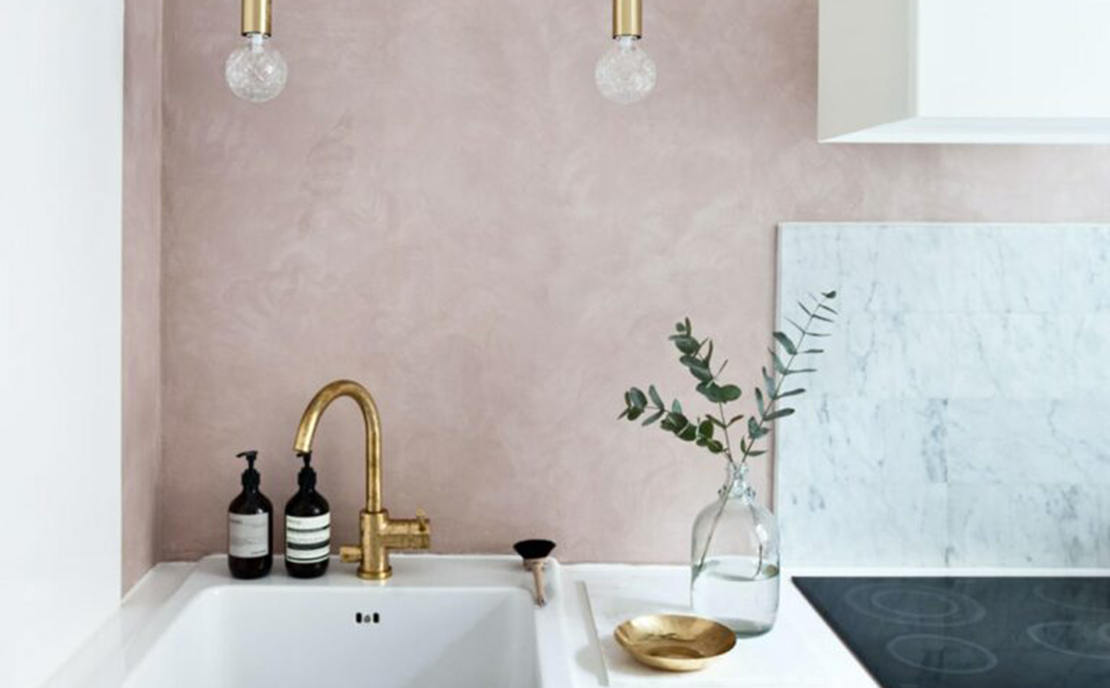
Pintura efecto óxido
The rusted finish is a aesthetic resource that prevails in interior decoration, especially on walls. A rustic aspect that despite symbolizing the passage of time, the natural aging of things, is liked and much. Using a paint is the most comfortable, fast and economical way to achieve this finish. A decorative technique for walls that is not limited to the home, but is also the protagonist of fashion showcases, top-level restaurants, luxury hotels and even vehicles.
En Topciment hemos desarrollado unapintura de efecto oxidadoque no pone límites a la creatividad. Un producto de muchos matices que puede ser utilizado en paredes de interior así como en fachadas de edificios, gracias a su resistencia a la intemperie. Una pintura que incluye partículas metálicas de cobre, bronce, hierro y latón y que puede ser utilizada también como pintura metalizada. Su versatilidad no tiene fronteras. Es compatible con multitud de soportes: microcemento, concreto, ladrillo, cerámica, metal, yeso, pladur, papel, etc. ¿A qué esperas para conocerla?
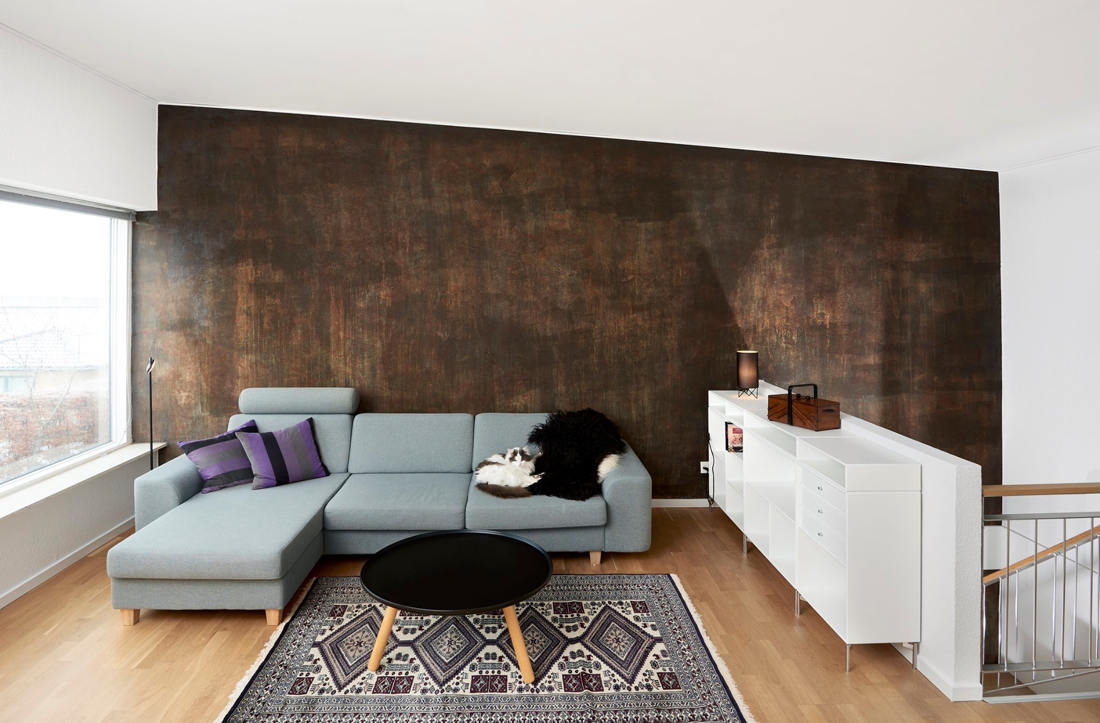
Decorative rollers
Los rodillos decorativos no son una técnica de pintura decorativa para paredes nueva, sin embargo ha vuelto a ponerse de moda en los últimos años. Gracias a estos rodillos de goma con relieve y dibujos de lo más variopintos, se crean todo tipo de efectos decorativos en la pared con mucha facilidad. El resultado se parece al del papel tapiz, con las diferencias obvias.
Simplemente tienes que manchar el rodillo con la pintura que escogiste e ir marcando poco a poco en la pared el diseño del rodillo. De esta manera, se crea un patrón repetitivo que cubre toda la superficie de la pared.
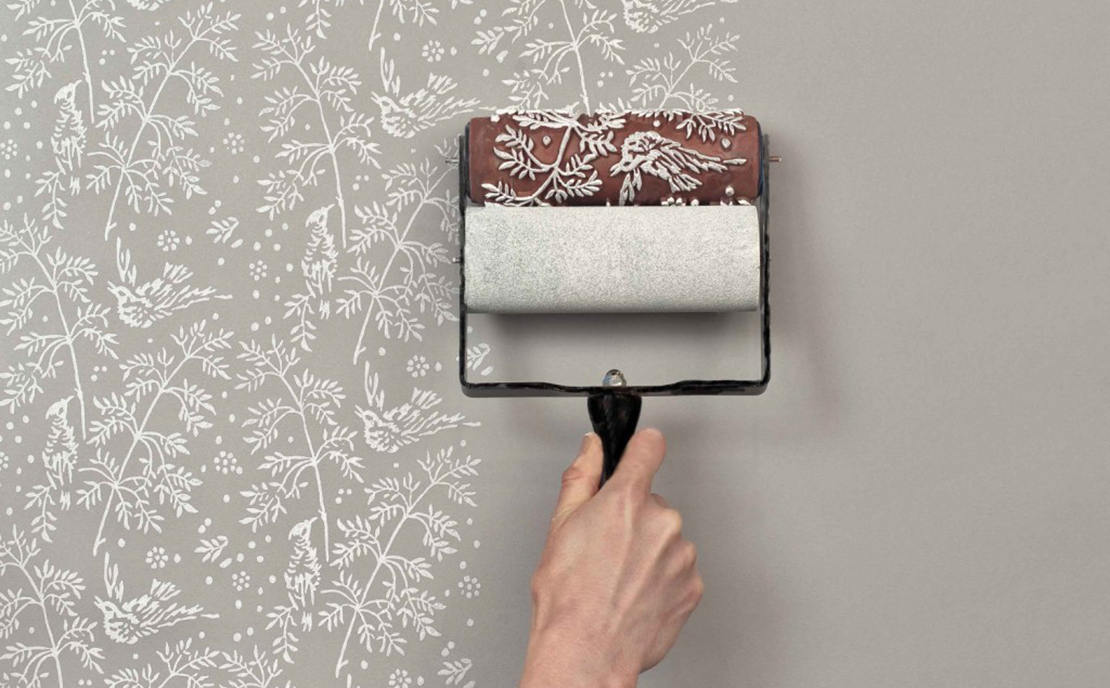
Glazes
Las glazes are very thin layers of paint, transparent or semi-transparent in color, that allow the lower layer to be seen. A decorative painting technique for walls that has been used for centuries with the aim of highlighting or reducing its temperature and making them more opaque or shiny.
En Topciment, contamos con veladurascon efecto metal y brillantina que no solo son aplicables sobre paredes, sino también en pisos e incluso muebles. Pátinas muy resistentes que permiten combinaciones incalculables para embellecer todo tipo de superficies.
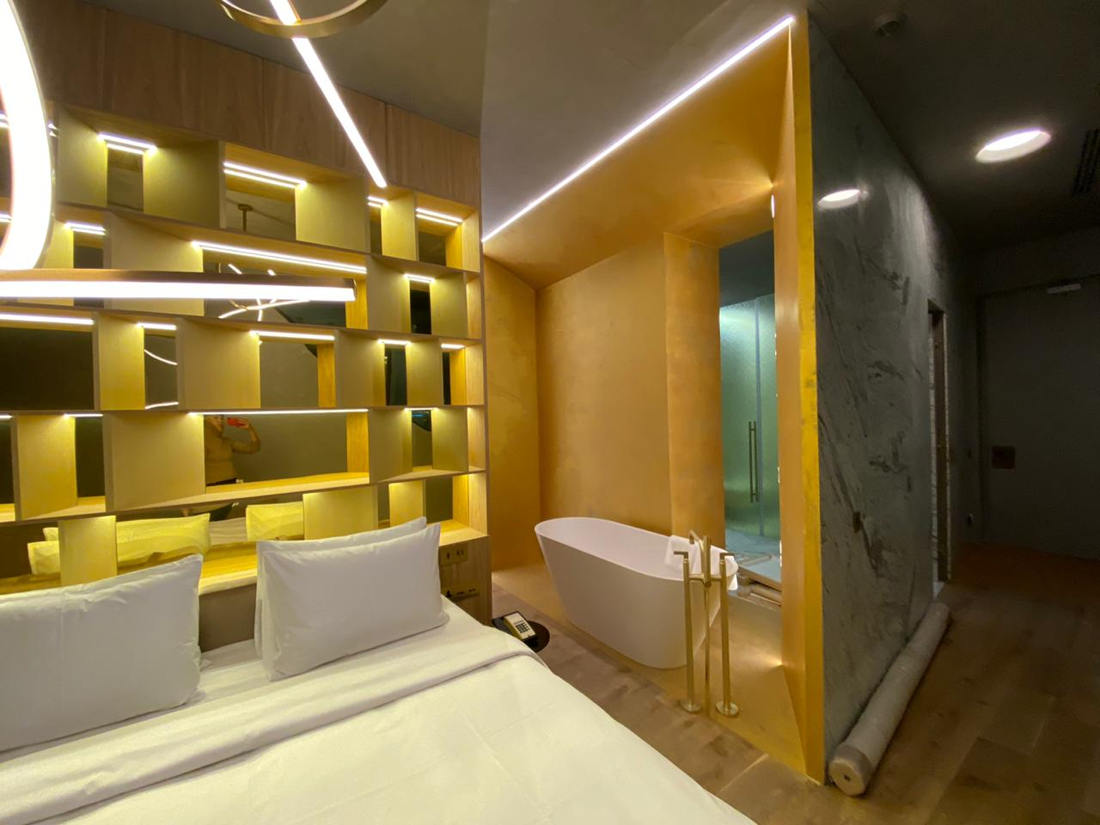
Estilos de pinturas decorativas que son tendencia
Con las pinturas decorativas se pueden emular la apariencia de algunos materiales cuyo precio es mucho más costoso. Dependiendo de la creatividad de cada cual, se puede crear un ambiente u otro para renovar el espacio y que se diferencie del resto de las estancias. Apostar por una decoración más tradicional o por una que rompa con todo lo establecido y que impacte a simple vista.
Todo es cuestión de moda, o no. Lo que está claro es que con esta técnica decorativa se pueden lograr grandes cambios rápidamente. A continuación vamos a analizar los estilos que más se llevan en la decoración de interiores. Desde los más clásicos hasta los más actuales.
Estilo clásico o nórdico
Lo clásico no tiene por qué estar en desacuerdo con lo vanguardista. De hecho, una decoración minimalista o con influencia de los países escandinavos es una de las tendencias más populares. Apostar por colores claros como el blanco o el beige para las paredes y combinarlo con muebles de madera o pisos de parqué, siempre es elegante.
El estilo clásico y el estilo nórdico se definen por acabados suaves y uniformes, evitando a toda costa extravagancias. Un ambiente elegante, atemporal y cómodo que es muy fácil de obtener con una pintura decorativa para las paredes.
Gradient style for an accent wall
El estilo degradado es una peculiar manera de pintar las paredes porque visualmente parece que se hayan quedado a medio hacer. Una técnica en la que habitualmente se utilizan diferentes tonalidades del mismo color y cuyo efecto es espectacular. Es uno de los estilos favoritos para lograr lo que se llama una pared acento, que destacará sobre el resto.
You have to divide the wall that is going to be painted into three parts. First, paint the entire surface with the lightest color. Then, use the intermediate color until you reach the line that has been drawn. With the help of a brush, when the paint is still wet, blur the line or edge. Next, paint the strip or bottom part with the darkest shade and, as done before, blur the edges with a brush until the strips are not visible.
Vintage style
The vintage style is one of the most used resources, and also the most striking, to give character to the space. And one of the most accessible options to achieve it is to renew the wall with a decorative paint that offers such a finish. Browns are the most common colors of these types of paints that quickly achieve a natural aging on the walls. As natural as life itself.
Topciment, fabricante de pinturas decorativas de calidad
For over 15 years, we have been developing all kinds of coatings. Among them, we manufacture different quality decorative paints for floors and walls depending on the finish you are looking for. Visit nuestro sitio weband discover the advantages of each of the options we offer to professionals.
Suscríbete a nuestro boletín informativo
Receive in your email tips for the application and care of microcement, the latest trends and news from Topciment products.




